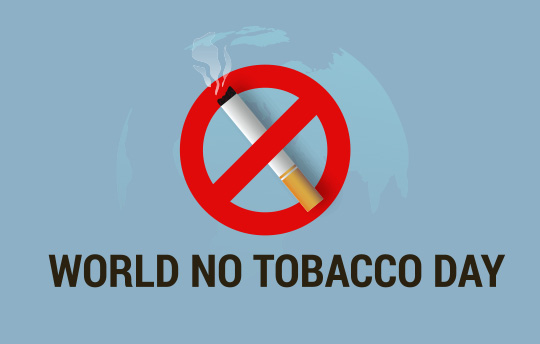 Using any kind of tobacco product is unsafe, especially for kids, teens, and young adults. But worldwide, at least 14 million young people age 13 to 15 currently use tobacco products, according to CDC’s 2006-2017 Global Youth Tobacco Survey. Tobacco companies, meanwhile, spend billions of dollars every year on marketing tobacco products, including cigarettes, cigars, e-cigarettes, and others.
Using any kind of tobacco product is unsafe, especially for kids, teens, and young adults. But worldwide, at least 14 million young people age 13 to 15 currently use tobacco products, according to CDC’s 2006-2017 Global Youth Tobacco Survey. Tobacco companies, meanwhile, spend billions of dollars every year on marketing tobacco products, including cigarettes, cigars, e-cigarettes, and others.
Since 1988, the World Health Organization (WHO) has used World No Tobacco Day to highlight the harmful effects of cigarettes and other tobacco products on a person’s overall health. This year, WHO is focusing on preventing youth tobacco product use and the tobacco industry’s attempts to attract youth.
This World No Tobacco Day, learn what individuals and communities can do to help keep young people tobacco-free, or help them quit for good.
The Danger of E-Cigarettes for Youth
Since 2014, most U.S. youth who said they had ever used tobacco products reported using e-cigarettes, and the percentage has grown. E-cigarettes typically contain nicotine, and newer e-cigarettes use a new form of it called nicotine salts, which make it easier to inhale higher levels of nicotine. Because of the recent rise in e-cigarette use by U.S. middle and high school students, CDC offers resources for parents, teachers, and healthcare providers to help them talk to kids about e-cigarettes.
What You Can Do
Everyone—from those who influence youth directly to whole communities—can help prevent children, teenagers, and young adults from trying and using tobacco products.
Parents and other caregivers can:
- Set a good example by being tobacco-free (call 1-800-QUIT-NOW or visit smokefree.gov for help with quitting)
- Talk to kids about the harms of tobacco products, including e-cigarettes
- Know what children watch, and talk about tobacco use onscreen
- Tell kids you expect them not to use tobacco products, or to stop using them
- Refuse to give tobacco products to kids, teens, or young adults
Healthcare providers can:
- Talk to their patients about the dangers of tobacco use (in a 2015 survey, only 1 out of 3 U.S. high schoolers said their doctor brought up smoking during a visit)
- Ask patients if they use tobacco products, and advise them to quit
States and communities can:
- Fund state tobacco control programs at the level CDC recommends
- Work to limit tobacco product advertising
- Use science-based strategies to prevent and reduce tobacco use, like tobacco price increases, hard-hitting media campaigns, adopting comprehensive smoke-free laws, licensing tobacco sellers,
- and limiting where tobacco products can be sold
- Provide barrier-free access to treatments proven to help people quit
If everyone works together to keep youth safe from the harms of tobacco use, we can move further toward a healthier, smoke-free world.
Quitting Resources for Youth & Adults
- Call 1-800-QUIT-NOW for resources like text support, counseling, and web-based chat.
- 1-855-DÉJELO-YA (Spanish)
- SmokefreeTXT for Teens is a free mobile text messaging program for youth aged 13 to 19.
- Download the quitSTART app on your phone for custom tips, inspiration, and challenges
Learn more at thewellnesscoalition.org/tobacco.
